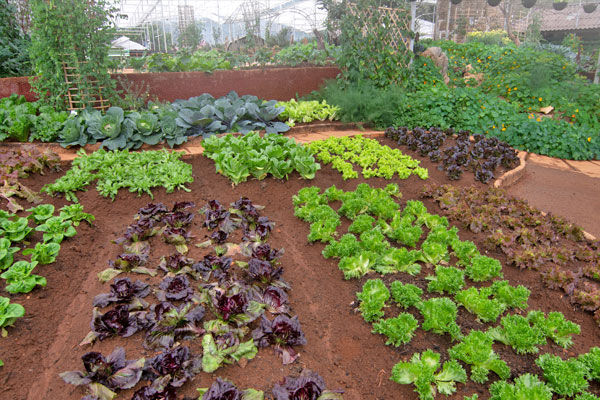Embarking on a journey to cultivate a 15 acre homestead is a dream many share. With the right gardening ideas, you can transform your land into a flourishing oasis. Whether you’re new to homesteading or looking to optimize your existing setup, there are numerous strategies to make the most of your acreage.

Understanding Your Land
First, it’s essential to thoroughly understand the characteristics of your land. Factors such as soil type, climate, and topography play a significant role in determining which gardening ideas will thrive. Conducting a soil test can provide valuable insights into nutrient levels and soil pH, helping you decide what to plant.
Soil Preparation
Once you understand your soil, preparation is key. This involves tilling the soil, adding organic matter, and considering erosion control methods. For more on this, check out the erosion control techniques that can prevent soil loss and boost fertility.
Choosing the Right Crops
With a 15 acre homestead, you have plenty of space to experiment with different crops. Consider a mix of vegetables, fruits, and herbs to provide variety and nutrition. Perennial plants like asparagus and rhubarb are great for long-term yields. Additionally, consider the climate and growing seasons in your area to ensure successful harvests.
Companion Planting
Companion planting is a technique that involves growing certain plants together to enhance growth and repel pests. For example, planting basil near tomatoes can improve their flavor, while marigolds can deter harmful insects.
Incorporating Livestock
Livestock can play a vital role in a homestead garden. Chickens, goats, and bees not only provide food but also contribute to the garden’s health. Chickens can help with pest control, goats can manage weeds, and bees are essential pollinators. For insights on raising dairy goats, explore this guide on dairy goats.
Integrating Animals
When integrating animals, it’s important to consider their space needs and the impact on your garden. Rotational grazing can benefit both the land and the animals, ensuring sustainable practices.
Implementing Sustainable Practices
Sustainability is at the heart of successful homesteading. Practices such as composting, rainwater harvesting, and permaculture can enhance your garden’s productivity and resilience. Composting turns waste into valuable fertilizer, while rainwater harvesting ensures a steady water supply, even in dry seasons.
Permaculture Principles
Permaculture is a holistic approach to agriculture that mimics natural ecosystems. By following permaculture principles, you can create a self-sustaining garden that requires less maintenance and enhances biodiversity.
Planning for All Seasons
To maximize your homestead’s potential, it’s crucial to plan for all seasons. Winter can be a challenging time, but with proper preparation, your garden can thrive year-round. Learn more about winter preparation in this winter prep guide.
Seasonal Crop Rotation
Rotating crops with the seasons not only maximizes yield but also helps prevent soil depletion and pest buildup. Plan your garden layout with crop rotation in mind for the best results.
Income Diversification
A 15 acre homestead can also be a source of income. Diversifying your homestead’s output can provide economic stability. Consider selling produce at local markets or exploring alternative income streams, such as agritourism or Airbnb ideas.
Market Gardening
Market gardening involves growing a variety of crops for sale rather than personal consumption. This approach can be profitable if you focus on high-demand crops and build a loyal customer base.
Leveraging Modern Tools
Utilizing modern tools and technology can greatly enhance the efficiency of your homestead garden. From automated irrigation systems to drones for monitoring, technology offers numerous advantages. For a comprehensive list of must-have tools, visit this external resource.
Smart Farming Techniques
Incorporating smart farming techniques, such as soil sensors and weather apps, can optimize planting schedules and improve crop health, leading to better yields.
Community Engagement
Engaging with the local community can provide support and resources for your homesteading journey. Joining local gardening clubs or online forums can connect you with like-minded individuals and provide valuable insights.
Sharing Knowledge
Consider hosting workshops or tours to share your experiences and inspire others. This not only builds community but also establishes your homestead as a local leader in sustainable practices.
Conclusion
Transforming a 15 acre homestead into a thriving garden is a rewarding endeavor. By understanding your land, choosing the right crops, and incorporating sustainable practices, you can create a productive and beautiful homestead. Whether you’re growing for personal use or income, these gardening ideas will help you make the most of your land.

FAQs
What are the first steps to start a homestead garden?
Begin by understanding your land’s characteristics, preparing the soil, and choosing suitable crops for your climate.
How can I make my homestead garden sustainable?
Incorporate practices like composting, rainwater harvesting, and permaculture to enhance sustainability.
Can I earn income from my homestead garden?
Yes, diversifying your homestead with market gardening or agritourism can provide additional income streams.





